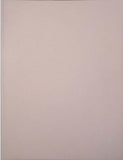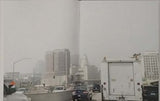New Deal
Beck, Jürgen
Regular price €34,00
“Jürgen Beck’s book is a glancing portrayal of this most-filmed of cities. Yet instead of resorting to the familiar, this series of photographs straddles time to capture the city through certain historical contradictions, illuminated and expounded by two essays from architect Wendy Gilmartin, and art historian David Misteli.
It considers how to evoke the myriad ironies of time passing that the cityscape embodies. Complex fabrics of old hope and new failure, old failure and new hope. Nothing ever turns out the way it was supposed to. We start in the light. That famous LA light that gave birth to an industry is there in the not-quite whiteness of the cover’s uncanny glow. Drawling through traffic, a word-dense landscape that preys on the car-bound with advertising slogans promising this deal or that one. Please do not disembark your vehicle here.
Interspersed with this street-view safari are eight images of the interior of the Bullocks Wilshire building. A cathedral of commerce that opened in 1929 and unwittingly morphed simultaneously into a golden calf. Designed to peddle high luxury to new money, with marble hallways built to flatter the acoustics of well-heeled feet. It opened its doors as the cash crashed. Capitalism’s first great falter exposed the failed promise of endless purchasing power and was a milestone on the way to better social security.…
New Deal then is both the new deal and a new deal. One was an earnest promise, in the wake of the Great Crash in 1929, the other is emblematic of the logic of late capitalism—which is no kind of logic really—where everything is new and everything is a deal until, like the Bullocks Wilshire, we realise there is nothing left to sell. - Leila Peacock.”
A series of photographs that document Los Angeles from two widely different perspectives; on the one hand, there are the clean and chic art deco ornamentations of the luxury Bullocks Wilshire warehouse that opened on the eve of the Great Depression of the ‘30s, on the other hand there are the crowded, smoggy streets and pavements with rubbish lining the gutters, loud advertisements fighting for attention, and the makeshift shelters of the homeless next to a budget store; by contrasting the two perspectives, the artist seems to ask us to consider not only the harsh contrast between the spheres of the wealthy and the poor, but also the parallels between our present age and the years of unchecked extravagance before the Great Depression; with insightful essays by Wendy Gilmartin, an architect, and David Misteli, an art historian, hard cover, 32,5 x 25 cm, 64 pages, St.Gallen 2018
ISBN: 978-3-033-06788-2







